
Cenaida Gauchagmida was 13 years old when paramilitaries contracted by Ascendant Copper stormed her community to tranquilize local resistant to a planned copper mind. Despite the mine’s known impacts on local communities and the environment, mining corporations had fought for decades to expand their operations in Ecuador’s biodiverse Intag Valley.
Only recently, after nearly thirty years of local resistance against a succession of six different copper mining corporations, Ecuador’s Imbabura provincial government finally ruled in favor of the Rights of Nature and of the indigenous communities in the Intag, putting a halt to all mining activities as of March, 2023.
What is a huge breath of relief for Cenaida and her community is also a major precedent for environmental justice and biodiversity conservation in Ecuador.
A History of Abuse, Exploitation, Resistance and Resilience
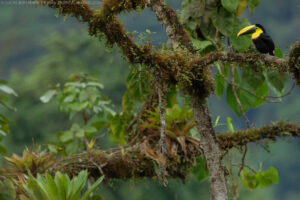
The Intag Valley, located in Northwest Ecuador in the country’s Tropical Andes bioregion, is the most biodiverse hotspot in the world. The Intag cloud forest is home to many rare and endangered species of animals and plants, as well as several indigenous communities. However, the region’s biodiversity has been under threat since the 1960s, when the Ecuadorian government incentivized farmers to clear the forests to make the land more ‘productive.’
Then, in the 90’s, the government invited Bishimetals, a subsidiary of Mitsubishi, to explore the Intag region’s mineral resources. This prompted Cuban-American expat Carlos Zorrilla, who lived in the region, to work with locals to form the environmental conservation organization DECOIN (Defense and Ecological Conservation of Intag).
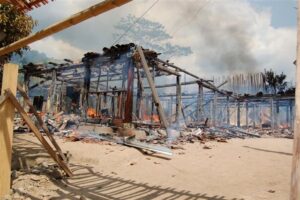
DECOIN began to educate the public about the potential impacts of mining, including biodiversity loss, water contamination and displacement. In response to these threats, the local communities revolted, burning down the mining camp and ultimately forcing Bishimetals to flee the country in 1997.

This early win inspired DECOIN to buy land in the proposed mining area— Junin—and hand it over to the local communities to form protected communal reserves. In response, locals fenced off pastures to let forests regenerate, and planted trees to restore degraded agricultural landscapes. Presently, there are 38 communal forest reserves in the Intag.
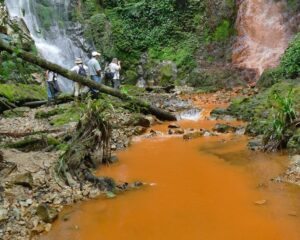
However, the communal reserves in Junin have faced continual and ongoing pressure from mining corporations due to the abundant copper beneath their soils. Chilean mining corporation CODELCO—the largest copper producer in the world—arrived in the region in 2014 and used the same brute force tactics to infiltrate Junin.
COLDECO began mine exploration and degraded over 700 hectares of rainforest by 2018, contaminating water with heavy metals which leached from over 90 drilling platforms.
However, recent changes to Ecuador’s Constitution gave local communities the grounds to resist CODELCO.
The Fight for the Rights of Nature
In 2008, Ecuador became the first country in the world to recognize the Rights of Nature in its national Constitution. The new Constitution gives Ecuadorians the right to uphold and defend the Rights of Nature. This became fundamental in the battle against CODELCO, which sought to double the extent of its copper exploration in the region.
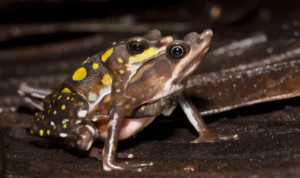
DECOIN brought CODELCO to court under the premise that the proposed copper exploration would destroy the habitat of two critically endangered species of frogs and therefore violate the Constitutional rights of nature.
DECOIN’s most recent case, which was presented in 2021, asserted that the Ecuadorian government failed to uphold the constitutional rights of local communities by neglecting to consult them about the mine before granting CODELCO the permission to begin exploration. This failure on the part of the state also violated a former court ruling from neighboring Los Cedros that affirmed that “the state must carry out environmental consultation with the local community… before an environmental permit is granted.”
After an appeal and months of delays, the Imbabura Provincial Court finally ruled in favor of the Rights of Nature and the communities of the Intag, denying CODELCO new environmental permits and halting all mining in the region as of March 2023.
What’s Next for the Communities of the Intag
This is a major relief and success for Guachagmida and her community, as well as the other communities of the Intag who rely on the forest reserves for their clean water and livelihoods. Although this ruling doesn’t necessarily protect the Intag from the intrusion of mining corporations in the future, it sets a precedent for how cases like these, in the Intag and elsewhere in Ecuador, will be handled from now on. It also sends a message to the world that mining investment in Ecuador is risky business.
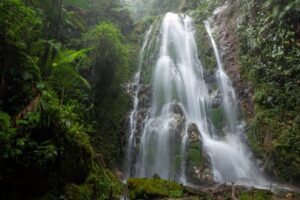
Furthermore, in the absence of CODELCO, local businesses in the Intag can continue to grow and thrive. Despite decades of degradation by mining corporations, the Intag region is known for producing some of the world’s best coffee and high quality cacao, which is grown under shade canopies in traditional agroforestry systems.
The Intag also has an emerging ecotourism industry, and it borders the Cotocachi-Cayapas Reserve, which is one of Ecuador’s most popular destinations for international tourists. The region is valued for its waterfall hikes, birdwatching, and hot springs.
As opposed to copper mining, these sustainable industries can provide income for generations to come while preserving the biodiversity on which they thrive. The Intag’s true wealth resides not underground in its mineral reserves, but rather in its rich soils, clear waters, robust forests and unique fauna, and in the communities who tend to them.
This blog post was inspired and informed by the following resources from Mongabay, a nonprofit environmental science and conservation news platform. Follow these links to learn more about the history, struggles and victories of the indigenous communities of the Intag Valley:
In Ecuador, communities protecting a ‘terrestrial coral reef’ face a mining giant
Ecuador court upholds ‘rights of nature,’ blocks Intag Valley copper mine

